Infeed Module Siemens Simodrive
The driving group is connected to the line supply via the infeed modules. Power is fed into the DC link using the infeed/regenerative feedback module (I/R module) and the unregulated infeed module (UI module). Additionally, the associated modules' electronics power supply is provided by the I/R, UI, and monitoring module. There is no adequate overload protection for the infeed modules. The configuration and proper setting of the current values in the control boards must offer this overload protection.

When the motor brakes, the UI module's drive energy—such as that from the Siemens Simodrive series—is fed into the DC link and transforms into heat that is released into the environment through the braking resistors. These brake resistors are mounted or incorporated. Within the parameters established during system engineering, one or more extra pulsed resistor modules (PR modules) can be utilized as needed. The applications listed below include using this module:
- machines with little or no braking energy or few braking cycles
- Drive groups for the main spindle drive that have low dynamic needs.
The step-up converter (7 kHz) for regulating the DC link voltage and allowing regenerative feedback is made up of I/R modules and HF/HFD commutating reactors. The applications listed below include using this module:
- machines that exert a lot of dynamic demand on the drives
- High braking energy and many braking cycles
- Control cabinet designs that are low-cost to operate
The monitoring module houses both the central monitoring duties for a distinct drive group and a whole electronics power supply for the equipment bus. The standard source of power is a 3-ph. 400–480 V AC line supply. The power supply can also be connected in parallel to the DC connection to allow for emergency retractions in the event of a power outage. If there are more drive modules in a group than can be powered by the infeed module's electronics (I/R or UI module), a monitoring module is necessary. The monitoring module also enables the creation of drive module groups in various cabinet levels or compartments.
The first module on the left in the drive group is where you'll find the I/R, UI, and monitoring modules. The commutating reactors, line filter, and mounting surface for the line supply infeed and drive modules must all be fastened to the mounting panels using a low-resistance connection, such as galvanized plates and panels. To meet the CE standards for the radio interference voltage limit values, line filters, line filter modules, and shielded cables are offered. When employing shielded power lines, shield terminal plates are available to satisfy EMC regulations. The line supply and infeed modules must be implemented in accordance with UL, which necessitates the overvoltage limiter module.
The line supply infeed's "standby mode" causes pulses to disable the power modules. Terminal 63 should be utilized to do the same. The DC connection continues to run at the unregulated level, which means that as soon as the pulses are activated, it is regulated and prepared to work. The cycle mentioned above also applies to the power supply's X181 or line supply beginning frequency. Five times in a five-minute span is the power supply's maximum starting frequency.
If you need assistance in finding the drive, motor, or servo system you require, just let us know. We have access to a worldwide supply chain network and can locate exactly what you need. We also offer a wide range of other parts and components for a variety of machines and equipment, including:
- Spindle Drives
- Spindle Drive Motors
- Monitors
- Controls
- Circuit Boards
- Power Supplies
- Rotary Tables
- Other Motors
Our qualified customer service representatives can help assist you in locating parts for your machines and equipment, provide you with a quote, and help you set up maintenance, repair, or installation services from one of our qualified technicians. To further demonstrate that you are aware of what to look for, contact us at (956) 246-7411 or send an email to services@cnctoolsllc.com if you need any further assistance.
